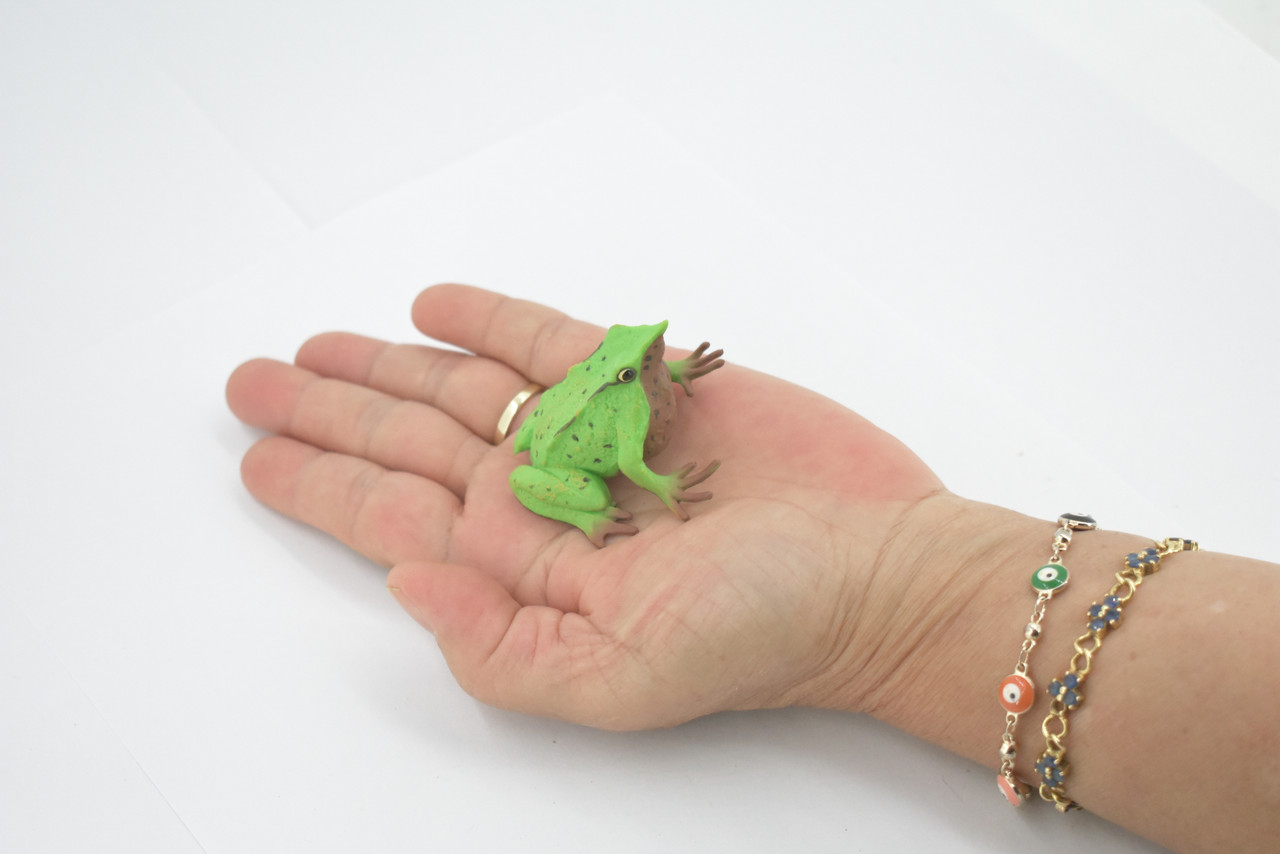Product Description
This Darwin’s frog, 2" figure includes hand painted features to give it realistic details that are true to natural anatomy. This figure is considered a museum quality replica. Highest Quality Natural Rubber.
Darwin’s frog, (Rhinoderma darwinii), a small Argentinian and Chilean frog that is one of the few species in the family Charles Darwin discovered the frog on his world voyage. Darwin’s frog is unique among amphibians for its brooding habits. Males pick up eggs about to hatch and carry the developing young about in their distensible vocal pouch until they are able to fend for themselves. The Darwin’s frog is covered in moist skin which is usually brown or green. Its front feet are not webbed like other frogs but the toes on its back feet sometimes are. The male of this species has an enlarged vocal sac in which it rears its young. The Darwin’s frog tends to stay in areas near cool and shallow creeks or streams. It can be found in Latin American countries such as Chile and Argentina. The diet of the Darwin’s frog consists mainly of insects and other small invertebrate. It catches its prey by remaining motionless, waiting for unsuspecting bugs to crawl or fly past, the frog then lunges forward, catching the prey in its mouth. The Darwin’s frog is most active during the day, spending many hours basking in the warm sunlight while remaining camouflaged in the surrounding leaf litter. It also spends its day waiting for prey. It hides among the damp leaves and waits patiently for insects to wander by, it then leaps forward devouring the prey. When threatened, the Darwin’s frog will play dead by rolling over onto its back until the danger has passed. Sometimes, it will leap into a nearby stream and float on the water on its back, again feigning death. When rearing young, the male Darwin’s frog will take a spawn of newly hatched tadpoles into its mouth and move them into its enlarged vocal sac, which will temporarily be used as a nursery. The tadpoles are sustained by eating the remainders of their eggs and by nutrient-rich secretions by the adult. When they have grown into froglets, they are spat out from the vocal sac. A male Darwin’s frog can look after up to 19 froglets at one time. The male Darwin’s frog sings throughout the breeding season, which lasts from November through to March, to attract a mate. Once a mate is found, the male will lead the female to a sheltered area where courtship and egg laying take place. The female will then leave but the male will remain with the eggs, guarding them while they develop.
Thanks for visiting Collectible Wildlife Gifts, the leading provider of high-quality, lifelike animal Designs and gifts! We work hard to ensure we have a diverse range of products. Each product is inspected for their quality craftsmanship. Whether you're searching for a great gift or seeking educational designs for displays, we’ve got you covered.
At Collectible Wildlife Gifts, our products appeal to a wide range of customers, including family, friends, and educators. Our products are trusted and used by professional organizations as well including aquariums, zoos, and movie studios.
Our extensive line of products boasts everything from plush sharks to educational animal growth cycles. Our products bring joy to recipients, and serve as valuable educational resources, sparking curiosity and fostering learning.
Discover the wonders of the natural world with Collectible Wildlife Gifts. Browse our collection today!



























